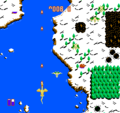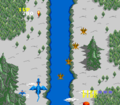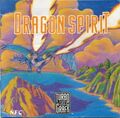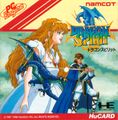Amstrad CPC[edit | edit source]


Developed by Consult Software and published in Europe by Domark in 1989. Suffers from the usual issues that ports suffer when being downgraded from 16-bit arcade hardware to an 8-bit computer processor, but arguably the most enjoyable of all the 8-bit computer conversion.
Atari ST[edit | edit source]


Developed by Consult Software and published in Europe by Domark in 1989. As a 16-bit home computer conversion, this version is second only to the Japanese Sharp X68000 version.
Commodore 64[edit | edit source]


Developed by Consult Software and published in Europe by Domark in 1989. A very limited conversion of the game. The difficulty is a little easier than the arcade version, but projectiles can be difficult to see.
Commodore Amiga[edit | edit source]


Developed by Consult Software and published in Europe by Domark in 1989. Because the Amiga version was originally coded for the Atari ST, and then converted over, this port unfortunately suffers from not being properly tuned to the Amiga's clock speed or color palette, resulting in an overly darkened presentation. A hack of this game that corrects many of these issues has been developed, which can be found here.
MS-DOS[edit | edit source]

A version that saw a very limited release. Appears to be similar, if not identical, to the Atari ST version. Little else is known about it.
NES[edit | edit source]
The Famicom/NES conversion of the game was developed by Namco, and published by Namco in 1989 in Japan. It was published by Bandai in the United States, where it was renamed Dragon Spirit: The New Legend. There are two difficulties, and there are more power-ups available. Although the levels contain a few different elements, most of the themes for each stage remains the same. For more information, please see Dragon Spirit: The New Legend.
-
screen
-
American box art
-
Japanese box art
Sharp X68000[edit | edit source]


Developed by Dempa and published in Japan by Micomsoft in 1988. As is typical for most ports to the X68000, this one is nearly arcade perfect, containing every aspect of the original. It even allows you to choose between the New and Old version of the arcade game.
Sinclair ZX Spectrum[edit | edit source]


Developed by Consult Software and published in Europe by Domark in 1989. Comparable in content to the Amstrad CPC version, but with limited colors.
TurboGrafx-16[edit | edit source]
Developed and published by Namco in Japan in 1988, and published by NEC in North America in 1989. It is a remarkably close conversion of the arcade version, albeit with a few omissions. The fifth level in the cavern does not contain any water. The seventh and eighth stages from the arcade game are removed entirely. Instead, the very long ninth stage is broken up into two parts, with the Hydra sub-boss being used as the boss of the first castle stage. This version of the game was also selected as the version which was offered for purchase on the Wii Virtual Console.
-
screen
-
American box art
-
Japanese box art






